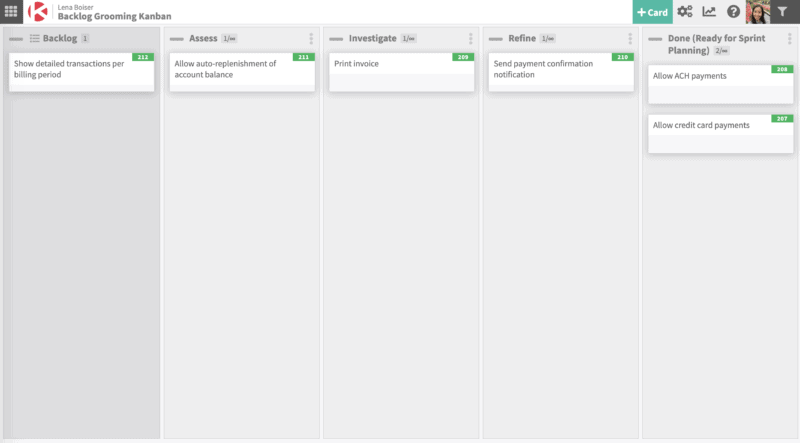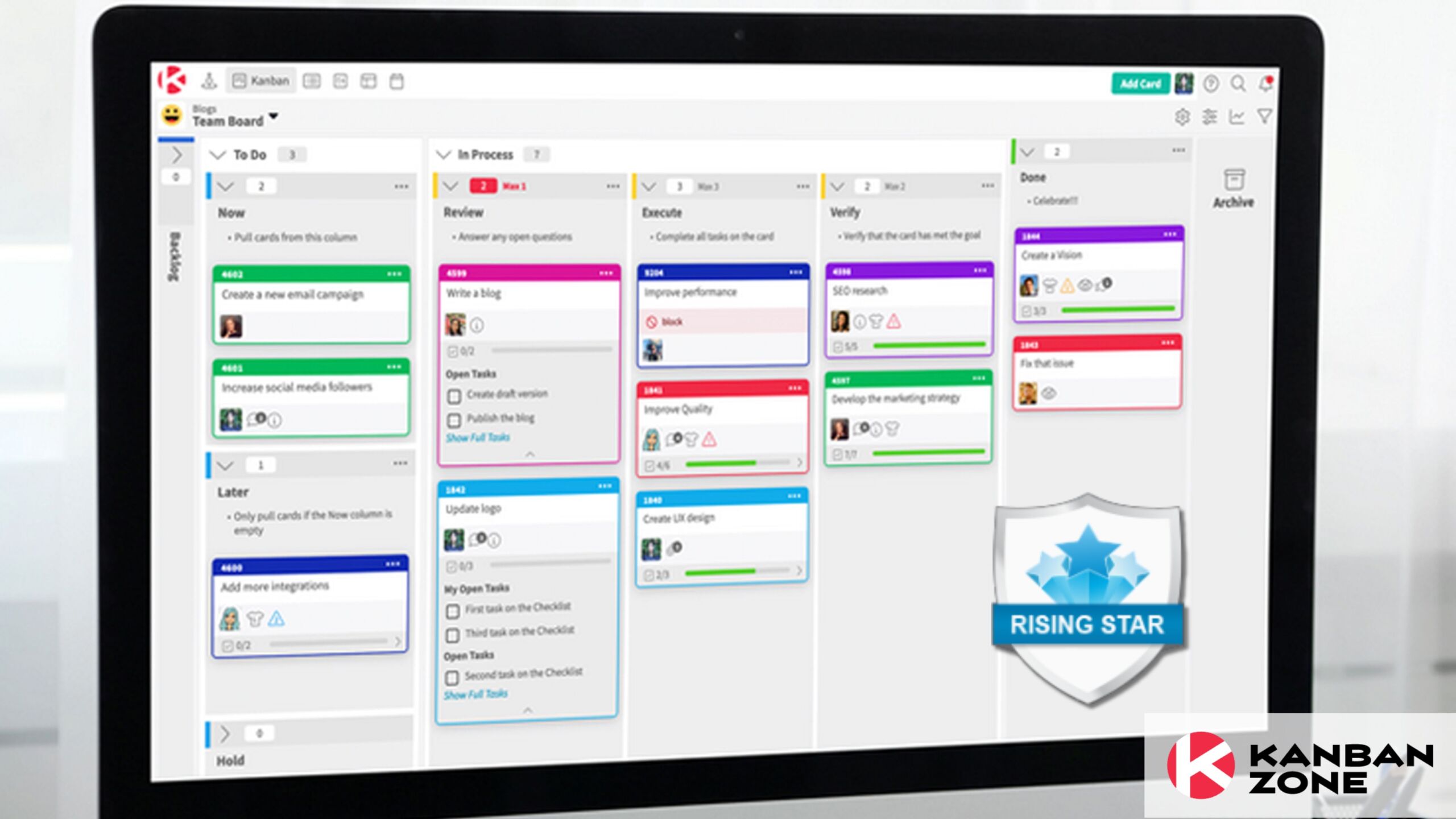
Article was last updated in November 2022.
Managing a product backlog can be one of the most challenging responsibilities that a Product Owner (PO) can have. We know that POs need to keep their backlogs refined. But it’s easier said than done. My PO journey started out miserably because of an “unrefined” product backlog. But what I and my previous team did to turn things around helped me find my groove in product backlog refining. If you’re curious about what we did, stick around and I’ll share with you how Kanban backlog refining helped me become a better Product Owner.
What is Product Backlog Refining?
A Product Backlog is an ordered list of everything that a team needs to work on for a product. It is the only source of requirements that pertain to the features and functionality that a product should have. The PO is ultimately responsible for maintaining the product backlog, along with its contents, and ordering. The process used to do this is called Product Backlog Refining.
Product Backlog Refinement is defined in the Scrum Guide as, “the act of adding detail, estimates, and order to items in the Product Backlog. This is an ongoing process in which the PO and the Development Team collaborate on the details of the Product Backlog items.”
A Product Owner’s Worst Nightmare
One of the problems of POs when it comes to managing their backlog is handling it. When not properly handled, the backlog can grow to a long list of anything and everything that the product can have and not what it should have. The backlog is not there so you can just dump any item. It takes careful thought and regular refining to keep it current and relevant.
When I started out as a PO, I was assigned to a mature product. In addition, it was handled by a different product manager prior to my assignment. When the backlog was handed to me, it had an astounding 400+ items. Needless to say, it was a headache. It was like opening Pandora’s box every time I view it. I worked with my business analyst and team to sort things out.
The process illustrated in the next section is what we used to work through the clutter and let only the important items emerge. We didn’t really call it anything back then. We just knew that we needed a system to move forward. After reading backlog management techniques, I found that Agile practitioners call it Kanban backlog refinement or replenishment.
How You Can Use Kanban for Backlog Refining
If you’re starting to build your product backlog or you’re inheriting yours, Kanban can help you refine your backlog. When we examine the process of product backlog management, it normally looks like this:

Product requests can come from various sources – user interviews, feedback, marketing insights, product innovation ideas, and more. The PO ideally is the one responsible for adding items in the product backlog. This way, the PO can immediately assess if an item should be pursued and fleshed out.
To better manage the backlog, The PO can translate the refining process to a Kanban system. Here’s an example of how your backlog refining online Kanban board would look like:
New product requests go into the Backlog column. In the Assess step, the PO decides if the item will move forward. If it does, then PO tries to discover what it would take to deliver the item in the Investigation step. This is done with the help of a product discovery team. The product discovery team is composed of people from the business and technical sides of development. I believe that no Product Owner is all-knowing. Successful POs know how to leverage the strengths and expertise of the discovery team to make better product decisions.
Once there is a common understanding of what it would take to deliver an item, it then goes to the Refine step. This is done with members of the development team. This is where the more nitty-gritty discussions happen and where effort estimates are given. POs usually discuss multiple items in one refinement session to maximize the use of everyone’s time. Some would say around 3-5 items would be a good indication that a refinement session is due.
At the refinement session, the team then decides if the item has enough information to be picked in one of the upcoming sprints, in which case it goes to the Done column. If more information needs to be clarified, the team can bring the card back to the Investigate column.
The Importance of Prioritization
To ensure that their team works on the most important features or enhancements all the time, the PO needs to keep the backlog ruthlessly prioritized. The greater the importance of an item, the higher its position on the list should be.
The backlog should be treated like a living organism and revisited frequently. If there’s a change in circumstances, the PO should diligently switch the position of any item on the backlog.
Kanban makes the process incredibly easy because every item is visualized as a separate card. Depending on the priority, the PO should move refined items closer to the top of the backlog column or move them down if their importance diminishes.
Each card should contain key information about the backlog item that could be used by the team when the time comes to process it.

When to Refine your Product Backlog
For teams that apply Scrum, the Scrum Guide states that backlog refining meetings must consume no more than 10% of the development team’s capacity. It will be different from team to team. The key here is to do it regularly. Backlog items must be refined ahead of the Sprint Planning session where they are slotted to be taken in.
As to the timing, I suggest you schedule your refining sessions at least 3 days before the sprint ends. This is because the team is usually busy in the last 3 days of the sprint and their mind is focused on delivering stories for the current sprint and not working on future ones. Also, keep these meetings short, as a lengthy refining session can be a draining experience for you and your team.
Development teams that rely on Kanban to manage their process operate in a continuous workflow. Therefore, the PO has to ensure that there are refined backlog items for developers to start processing as soon as they have capacity.
Since there’s no fixed cadence for the purpose, the PO has the liberty to refine the backlog monthly, weekly, or even daily and schedule refinement meetings as needed. This is referred to as just-in-time backlog refinement.
Time to Get Refining
Kanban backlog refining puts structure into what could turn into a messy product backlog management process. With checkpoints built-in before an item makes it to a sprint planning session, POs and teams can confidently pick items for their next sprint and would not need to spend time discussing what should have been discussed during the refinement session.
Are you ready to try Kanban backlog refining? We have a board template that you can use to get started. Try it out for a few sprints and see the results. If you do try this out, we’d love to know your experience and thoughts in the comments section below.
Now, get refining!
Learn to Work Smarter, Not Harder!
Get our top articles weekly.
Table Of Contents
Discover many more posts…








